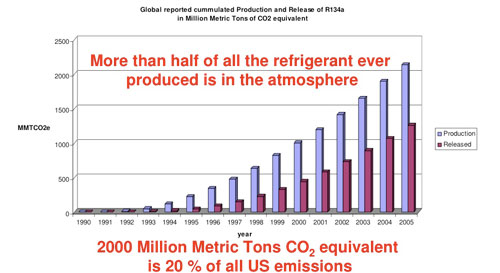In Commercial Refrigeration Equipment
 Natural refrigerants are non-synthetic substances which can be used as cooling agents in commercial refrigeration equipment and air conditioners. These include naturally occurring substances like water, air, CO2, ammonia, and hydrocarbons like propane, butane, and cyclopentane. While they have been used for years as refrigerants they are only just now beginning to replace synthetic refrigerants in commercial refrigeration equipment.
Natural refrigerants are non-synthetic substances which can be used as cooling agents in commercial refrigeration equipment and air conditioners. These include naturally occurring substances like water, air, CO2, ammonia, and hydrocarbons like propane, butane, and cyclopentane. While they have been used for years as refrigerants they are only just now beginning to replace synthetic refrigerants in commercial refrigeration equipment.
Why Natural Refrigerants For Commercial Refrigeration Equipment?
While the Montreal Protocol addressed ozone depleting refrigerants like HCFCs and CFCs, it failed to address global warming potential of the proposed substitutes like HFCs. Increased scientific evidence has also shown that HFCs had huge potential to contribute to the greenhouse gas problem. So replacing HCFCs and CFCs with HFCs only displaced the problem. The only real solution to address both the ozone damaging and greenhouse gas problem created by refrigerants is to use natural refrigerants, including in commercial refrigeration equipment which is one of the largest consumers of refrigerant chemicals in the world.
The Economics Of Natural Refrigerants
Natural refrigerants are inexpensive to produce, in most cases even less expensive than HFCs; natural refrigerants are extremely energy efficient when used in large scale systems; and the disposal cost of natural refrigerants is negligible when compared to HFCs as well as older refrigerants like HCFCs. The major issue for commercial refrigeration equipment is the increase in capital expenditure required for small and medium businesses to convert to a natural refrigerant system. This is the major issue preventing wide spread adoption for natural refrigerants in commercial refrigeration equipment. Unlike retrofitting commercial refrigeration equipment with non-ozone depleting refrigerants, all natural refrigerant systems require a complete overhaul of the commercial refrigeration equipment.
In spite of the economics of this issue, there is a worldwide push to switch to natural refrigerants in commercial refrigeration equipment. As of 2005, more than half of all synthetic refrigerants ever produced were in the atmosphere (AFEA S Alternative Fluorocarbons Acceptability Study, 2007). To reduce the Global Warming Potential and provide zero ozone depleting potential as required by the Montreal and Kyoto Protocols, commercial refrigeration equipment will eventually have to be cooled by natural refrigerants. It is estimated that if commercial refrigeration equipment in the United States alone was converted to natural refrigerants, the industry would be able to reduce emission of CO2 and other greenhouse gases by 22 million metric tons annually.
S Alternative Fluorocarbons Acceptability Study, 2007). To reduce the Global Warming Potential and provide zero ozone depleting potential as required by the Montreal and Kyoto Protocols, commercial refrigeration equipment will eventually have to be cooled by natural refrigerants. It is estimated that if commercial refrigeration equipment in the United States alone was converted to natural refrigerants, the industry would be able to reduce emission of CO2 and other greenhouse gases by 22 million metric tons annually.









